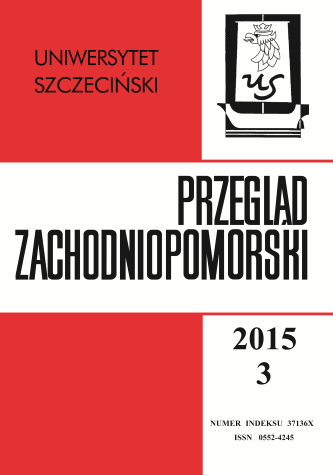Mabuse – Żyd czy nazista?
Mabuse – a Jew or a Nazi?
Author(s): Tomasz KłysSubject(s): History, Social Sciences, Recent History (1900 till today), WW II and following years (1940 - 1949)
Published by: Wydawnictwo Naukowe Uniwersytetu Szczecińskiego
Summary/Abstract: The last Weimar film by Fritz Lang, Das Testament des Dr. Mabuse / Le Testament du Dr. Mabuse (1933), is commonly regarded as anti-Nazi. Such an opinion results, inter alia, from the fact that the film was not authorised to go on general release in the Third Reich and from the story according to which the director must have escaped from Germany in April 1933 after an alleged meeting with Goebbels, minister of propaganda. In the light of the documents revealed after the death of the director and the facts commonly known now it has turned out that the whole story had been Lang’s fabrication, it is a ‘conjured-up film’. Being an expatriate in the USA Lang strengthened the widespread conviction of the anti-Nazi character of his film by manipulating the translation of the subtitles while the French version of his film was being released in the USA in 1943. The director made further manipulations on the original material of the film when its German version was being released in the USA in 1952 under the title of The Crimes of Dr Mabuse; its anti-Nazi character was suggested by the dialogues in the English-language dubbing translated from the German language; the translation was not literal (word-for-word) in the least. Some additional fragments of the film were shot later in order to explain that the plot took place between 1932 and 1939 when Germany was ruled by ‘Hitler’s criminal gang’. It was just ‘Hilter’s criminal gang’ – according to this interpretation – that is synonymous with the gang of Mabuse/Baum. Just the reverse interpretation was suggested by the version of the film released by Goebbels in the Third Reich – some extra scenes (Rahmenhandlung) shot then suggested placing the action in the ‘gloomy’ times of the Weimar Republic ruled by the Jews.The analysis of the original, devoid of any manipulations, version of the film proves that Mabuse is an ‘empty space’ that may be ‘filled’ with various political and cultural meanings, but always connected with the authorities, with violence, crime, financial chicaneryand behind-the-scenes manipulation.Yet, instead of looking for a political interpretation of the film, it might be interesting to have a look at its aesthetic affiliations: the plot of The Last Will of Dr Mabuse surprisingly resembles the famous film by Robert Wiene Das Cabinet des Dr. Caligari (1919), the last production of the Weimar Cinema. The two films describe criminal psychiatrists that became mad and eventually were locked in a mental hospital, which had been headed by them before.
Journal: Przegląd Zachodniopomorski
- Issue Year: 30/2015
- Issue No: 03
- Page Range: 43-58
- Page Count: 16
- Language: Polish

